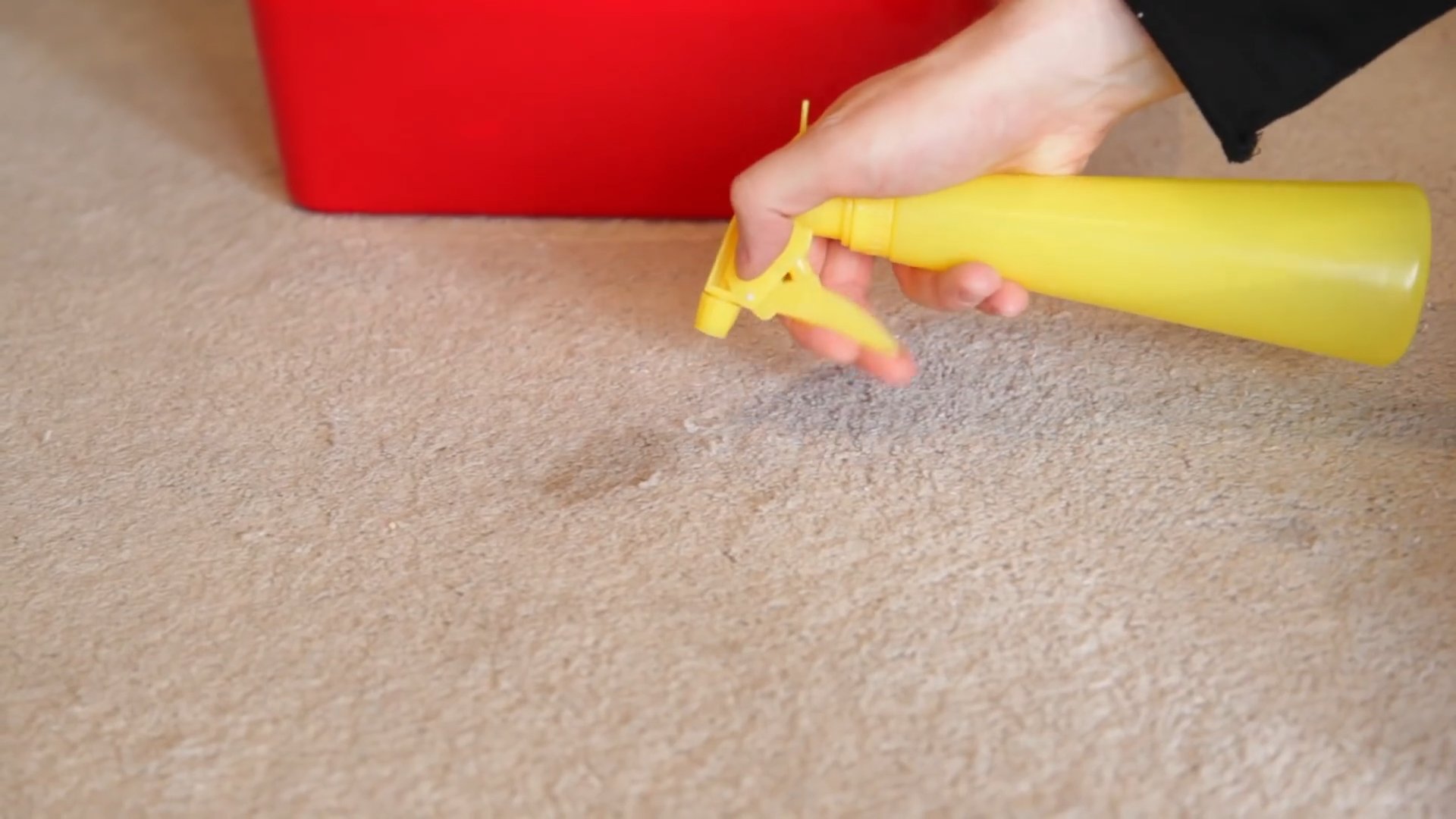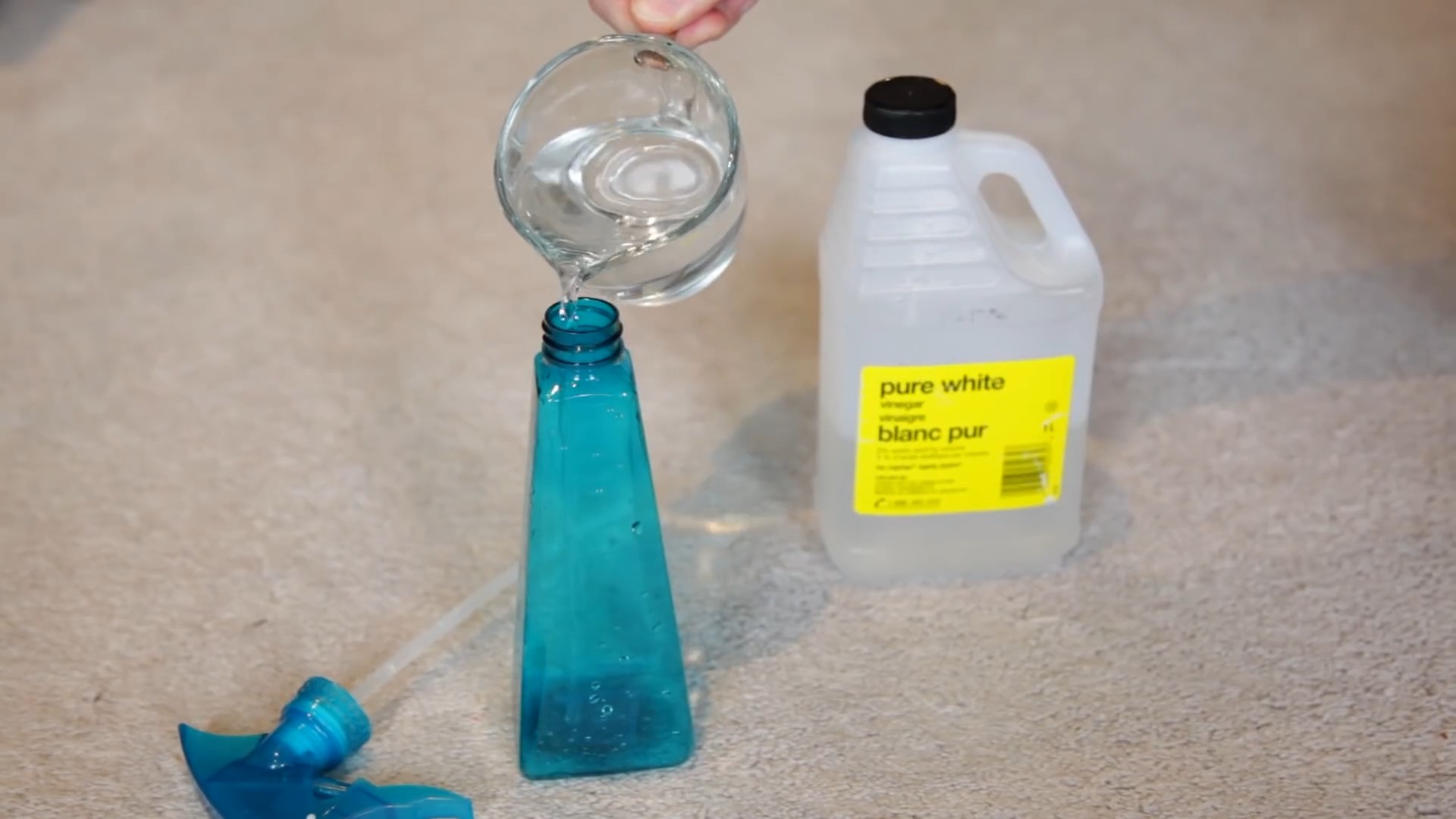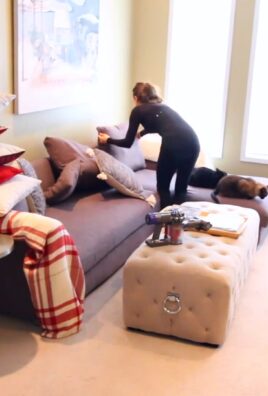Natural Carpet Stain Removal: Is your beautiful carpet under siege from spills, splatters, and the occasional muddy paw print? Don’t despair! I know the feeling – a pristine carpet can feel like an impossible dream, especially with kids or pets around. But before you reach for those harsh chemical cleaners, let me tell you a secret: you can achieve amazing results with simple, natural ingredients you probably already have in your pantry.
For generations, resourceful homeowners have relied on the power of nature to keep their homes clean and fresh. Think about it – our grandmothers didn’t have access to the array of commercial products we do today. They used vinegar, baking soda, and lemon juice to tackle everything from stubborn stains to lingering odors. These time-tested methods are not only effective but also gentler on your carpet fibers and safer for your family and the environment.
Why is natural carpet stain removal so important? Well, beyond the obvious aesthetic benefits of a clean carpet, using natural solutions reduces your exposure to harmful chemicals that can irritate your skin, lungs, and even contribute to indoor air pollution. Plus, it’s a fantastic way to save money and reduce your environmental footprint. In this article, I’m going to share my favorite DIY tricks and hacks for banishing those pesky carpet stains using simple, natural ingredients. Get ready to say goodbye to stains and hello to a fresh, clean, and healthy home!

DIY Natural Carpet Stain Removal: Banishing Blemishes the Eco-Friendly Way
Hey there, fellow homeowners! Spills happen, right? Whether it’s a rogue glass of red wine, muddy paw prints, or a mysterious coffee stain, carpets seem to attract messes like magnets. But before you reach for those harsh chemical cleaners, let’s explore some fantastic, natural ways to tackle those carpet stains. I’ve personally tested these methods, and I’m excited to share my secrets for a clean and fresh carpet, all while being kind to the environment and your family.
What You’ll Need: Your Natural Stain-Fighting Arsenal
Before we dive into the stain-busting action, let’s gather our supplies. The beauty of these methods is that you probably already have most of these items in your pantry!
* White Vinegar: This is my go-to for so many cleaning tasks. Its acidity helps break down stains and deodorize.
* Baking Soda: A natural deodorizer and mild abrasive, baking soda is excellent for absorbing liquids and lifting stains.
* Dish Soap (Gentle, Clear): A small amount of gentle dish soap can help emulsify grease and lift stubborn stains. Avoid anything with dyes or strong fragrances.
* Hydrogen Peroxide (3%): A mild bleaching agent, hydrogen peroxide is fantastic for lighter-colored carpets. Always test in an inconspicuous area first!
* Club Soda: The carbonation helps lift stains and prevent them from setting.
* Clean White Cloths or Sponges: Avoid colored cloths, as the dye could transfer to your carpet.
* Spray Bottle: For applying liquid solutions.
* Vacuum Cleaner: Essential for removing loose debris and dried cleaning solutions.
* Old Toothbrush or Soft-Bristled Brush: For gently scrubbing stubborn stains.
* Iron (Optional): For tackling particularly stubborn stains (more on this later!).
* Towel (for blotting): A clean, absorbent towel is crucial for removing excess moisture.
General Stain Removal Tips: The Golden Rules
Before we get into specific stain types, let’s cover some essential stain removal principles:
* Act Fast! The sooner you address a stain, the easier it will be to remove. Fresh stains are much more responsive to treatment.
* Blot, Don’t Rub! Rubbing a stain will only spread it and grind it deeper into the carpet fibers. Always blot gently with a clean cloth.
* Work from the Outside In: Start blotting at the outer edges of the stain and work your way towards the center. This prevents the stain from spreading.
* Test in an Inconspicuous Area: Before applying any cleaning solution to the entire stain, test it on a hidden area of your carpet (like inside a closet or under furniture) to ensure it doesn’t cause discoloration.
* Be Patient: Stain removal can take time and multiple attempts. Don’t get discouraged if the stain doesn’t disappear immediately.
* Rinse Thoroughly: After applying a cleaning solution, rinse the area with clean water to remove any residue.
* Dry Completely: Excess moisture can lead to mold and mildew growth. Ensure the carpet is completely dry after cleaning.
Tackling Common Carpet Stains: Step-by-Step Guides
Now, let’s get down to the nitty-gritty and address some common carpet stains using our natural cleaning arsenal.
1. Red Wine Stain Removal
Ah, the dreaded red wine stain! Don’t panic; here’s how to tackle it:
1. Blot Immediately: As soon as the wine spills, grab a clean white cloth and blot up as much liquid as possible. Apply firm pressure.
2. Club Soda to the Rescue: Pour club soda onto the stain, saturating the area. The carbonation will help lift the wine.
3. Blot Again: Blot up the club soda with a clean cloth. Repeat steps 2 and 3 until you’ve removed as much wine as possible.
4. Baking Soda Power: Generously sprinkle baking soda over the damp stain. Let it sit for several hours, or even overnight. The baking soda will absorb the remaining wine.
5. Vacuum Thoroughly: Vacuum up the baking soda. If a faint stain remains, proceed to the next step.
6. Vinegar Solution (If Needed): Mix equal parts white vinegar and water in a spray bottle. Lightly spray the remaining stain.
7. Blot and Dry: Blot the area with a clean cloth and allow it to air dry completely.
2. Coffee Stain Removal
Coffee stains can be tricky, but here’s a natural approach:
1. Blot the Spill: As with any spill, blot up as much coffee as possible with a clean cloth.
2. Dish Soap Solution: Mix a small amount of gentle, clear dish soap with warm water.
3. Apply and Blot: Dip a clean cloth or sponge into the soapy solution and gently blot the stain.
4. Rinse with Water: Rinse the area with clean water to remove any soap residue.
5. Vinegar Rinse (Optional): For stubborn stains, follow up with a rinse of equal parts white vinegar and water.
6. Blot and Dry: Blot the area with a clean cloth and allow it to air dry completely.
3. Pet Stain Removal (Urine, Vomit, Feces)
Pet stains require a two-pronged approach: stain removal and odor elimination.
1. Remove Solids: If there are any solid materials (vomit or feces), carefully remove them with a paper towel or spoon.
2. Blot Excess Liquid: Blot up as much liquid as possible with a clean cloth.
3. Baking Soda Power: Generously sprinkle baking soda over the affected area. Let it sit for several hours, or overnight, to absorb odors and moisture.
4. Vacuum Thoroughly: Vacuum up the baking soda.
5. Vinegar Solution: Mix equal parts white vinegar and water in a spray bottle. Spray the area thoroughly.
6. Enzyme Cleaner (Optional): For persistent odors, consider using a natural enzyme cleaner specifically designed for pet stains. Follow the product instructions carefully.
7. Blot and Dry: Blot the area with a clean cloth and allow it to air dry completely. You can place a fan nearby to speed up the drying process.
4. Mud Stain Removal
Mud stains can be surprisingly easy to remove if you follow these steps:
1. Let it Dry Completely: Resist the urge to wipe up wet mud. Allow the mud to dry completely.
2. Vacuum Thoroughly: Once the mud is dry, vacuum up as much as possible.
3. Dish Soap Solution: Mix a small amount of gentle, clear dish soap with warm water.
4. Apply and Blot: Dip a clean cloth or sponge into the soapy solution and gently blot the stain.
5. Rinse with Water: Rinse the area with clean water to remove any soap residue.
6. Blot and Dry: Blot the area with a clean cloth and allow it to air dry completely.
5. Grease Stain Removal
Grease stains can be challenging, but here’s a natural approach:
1. Blot Excess Grease: Blot up as much grease as possible with a clean cloth or paper towel.
2. Baking Soda Power: Generously sprinkle baking soda over the grease stain. Let it sit for at least 30 minutes, or longer for stubborn stains.
3. Vacuum Thoroughly: Vacuum up the baking soda.
4. Dish Soap Solution: Mix a small amount of gentle, clear dish soap with warm water.
5. Apply and Blot: Dip a clean cloth or sponge into the soapy solution and gently blot the stain.
6. Rinse with Water: Rinse the area with clean water to remove any soap residue.
7. Blot and Dry: Blot the area with a clean cloth and allow it to air dry completely.
6. Ink Stain Removal
Ink stains can be tricky, but here’s a method that often works:
1. Blot Immediately: Blot up as much ink as possible with a clean cloth.
2. Rubbing Alcohol (Isopropyl Alcohol): Dampen a clean cloth with rubbing alcohol.
3. Blot the Stain: Gently blot the ink stain with the alcohol-dampened cloth. Work from the outside in.
4. Repeat as Needed: Repeat steps 2 and 3, using a clean area of the cloth each time, until the ink is removed.
5. Rinse with Water: Rinse the area with clean water to remove any alcohol residue.
6. Blot and Dry: Blot the area with a clean cloth and allow it to air dry

Conclusion
So, there you have it! Ditching harsh chemicals and embracing the power of natural ingredients for carpet stain removal isn’t just a trend; it’s a smarter, safer, and often more effective way to keep your carpets looking their best. We’ve explored a simple yet potent method that leverages the cleaning prowess of readily available household staples. This isn’t just about saving money (though that’s a definite perk!); it’s about creating a healthier home environment for you, your family, and your pets.
Why is this DIY trick a must-try? Because it works! It’s a gentle yet powerful solution that tackles common carpet stains without the lingering chemical odors and potential health risks associated with commercial stain removers. Plus, it’s incredibly versatile.
Consider these variations to tailor the solution to your specific needs:
* For older, set-in stains: Pre-treat the area with a paste of baking soda and water, allowing it to dry completely before vacuuming. This helps to draw out the stain before applying the natural cleaning solution.
* For pet odors: Add a few drops of your favorite essential oil (lavender, lemon, or tea tree are excellent choices) to the spray bottle for an extra boost of freshness. Be sure the essential oil is safe for pets before using.
* For delicate carpets: Test the solution on an inconspicuous area first to ensure colorfastness. You can also dilute the solution further with water for extra caution.
* For a deeper clean: After applying the solution, use a clean, damp cloth to blot the area thoroughly. Follow up with a dry cloth to absorb any excess moisture. You can also use a carpet cleaning machine with the natural solution diluted with water.
We’ve armed you with the knowledge and the recipe; now it’s time to put it to the test! Don’t let stubborn stains ruin the beauty of your carpets. Embrace the power of natural carpet stain removal and experience the satisfaction of a clean, fresh, and healthy home.
We’re confident that you’ll be amazed by the results. But don’t just take our word for it! We encourage you to try this DIY trick and share your experience with us. Let us know what types of stains you tackled, what variations you tried, and what results you achieved. Your feedback will not only help other readers but also contribute to a growing community of eco-conscious homeowners who are committed to finding natural and effective solutions for everyday cleaning challenges. Share your before-and-after photos, your tips, and your success stories in the comments section below. We can’t wait to hear from you!
Frequently Asked Questions (FAQs)
Q: What types of stains is this natural carpet stain removal method effective on?
This method is effective on a wide range of common carpet stains, including food spills (coffee, wine, juice, sauces), pet accidents (urine, vomit, feces), dirt and mud, and some types of ink. However, the effectiveness may vary depending on the age and severity of the stain, as well as the type of carpet fiber. For particularly stubborn or old stains, you may need to repeat the process or try a combination of techniques. It’s always best to treat stains as quickly as possible for the best results.
Q: Is this natural carpet stain removal method safe for all types of carpets?
While this method is generally safe for most carpets, it’s always a good idea to test it on an inconspicuous area first to ensure colorfastness. This is especially important for delicate carpets, such as wool or silk. To test, apply a small amount of the solution to a hidden area of the carpet, such as under a piece of furniture or in a closet. Let it sit for a few minutes, then blot with a clean, white cloth. If there is any color transfer to the cloth, the solution may not be suitable for your carpet. If you are unsure about the type of carpet you have, consult the manufacturer’s instructions or a professional carpet cleaner.
Q: What ingredients are needed for this natural carpet stain removal method?
The basic ingredients typically include white vinegar, baking soda, and water. Some variations may also include dish soap (a mild, clear, non-bleach formula), hydrogen peroxide (for light-colored carpets only), and essential oils (for added fragrance and antibacterial properties). The specific proportions of each ingredient may vary depending on the recipe you are following. Always use clean, fresh ingredients for the best results.
Q: How does this natural carpet stain removal method work?
The combination of ingredients works synergistically to break down and lift stains from carpet fibers. Baking soda is a natural deodorizer and absorbent, helping to draw out stains and neutralize odors. White vinegar is a mild acid that helps to dissolve stains and disinfect the area. Dish soap acts as a surfactant, helping to loosen and lift the stain from the carpet fibers. Hydrogen peroxide is a bleaching agent that can help to lighten stains on light-colored carpets. The blotting action helps to physically remove the stain from the carpet.
Q: Can I use this natural carpet stain removal method on upholstery?
Yes, this method can also be used on upholstery, but it’s even more important to test it on an inconspicuous area first, as upholstery fabrics can be more delicate than carpets. Use the same testing procedure as described above for carpets. Be sure to use a clean, white cloth to blot the area, and avoid over-wetting the fabric. Allow the upholstery to air dry completely before using it.
Q: How often can I use this natural carpet stain removal method?
You can use this method as often as needed to treat stains. However, it’s important to avoid over-wetting the carpet, as this can lead to mold and mildew growth. Always blot the area thoroughly with a clean, dry cloth after applying the solution. If you are treating a large area, you may want to use a carpet cleaning machine with the natural solution diluted with water.
Q: What are some tips for preventing carpet stains?
Prevention is always better than cure! Here are some tips for preventing carpet stains:
* Use doormats at all entrances to trap dirt and debris.
* Remove shoes before entering the house.
* Clean up spills immediately.
* Vacuum regularly to remove dirt and dust.
* Use carpet protectors in high-traffic areas.
* Train pets to eliminate outdoors.
* Avoid eating and drinking in carpeted areas.
Q: Where can I find more information about natural cleaning methods?
There are many resources available online and in libraries about natural cleaning methods. You can search for articles, blog posts, and books on the topic. You can also find information from reputable organizations such as the Environmental Protection Agency (EPA) and the National Resources Defense Council (NRDC). Be sure to research any cleaning method thoroughly before trying it, and always follow safety precautions.
Q: What if the stain doesn’t come out after trying this method?
Some stains are simply too stubborn or set-in to be removed with natural cleaning methods. In these cases, you may need to consult a professional carpet cleaner. A professional cleaner has access to specialized equipment and cleaning solutions that can effectively remove even the most difficult stains. However, be sure to ask the cleaner about their cleaning methods and the types of chemicals they use, as some commercial cleaning solutions can be harsh and harmful.





Leave a Comment